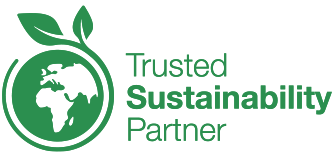Learn More
Invitrogen™ mirVana™ miRNA Isolation Kit, without phenol
The mirVana™ miRNA Isolation Kit uses a rapid procedure to isolate small RNAs from tissue and cells using an efficient glass fiber filter (GFF)-based method.
Brand: Invitrogen™ AM1561
3816.00 NOK valid until 2025-06-30
Use promo code "24108" to get your promotional price.


Description
The mirVana™ miRNA Isolation Kit uses a rapid procedure to isolate small RNAs from tissue and cells using an efficient glass fiber filter (GFF)-based method. The method isolates total RNA ranging in size from kilobases down to 10-mers. Each kit contains sufficient reagents and consumables for either 40 isolations of total RNA (including small RNAs), or 20 separate large and small RNA fractions. Phenol must be purchased separately. Features of this kit:
• Efficient isolation of small RNA-containing total RNA
• Enrich for small RNA (less than 200 nt) to increase sensitivity in downstream analyses
• Simple 30 minute procedure
• Ideal for miRNA, siRNA, shRNA, and snRNA analysis
• Compatible with virtually all cell and tissue types
Efficient recovery of small RNA
Current RNA purification procedures rely on organic extraction, followed by alcohol precipitation or adsorption of nucleic acid molecules on a GFF or silicate matrix. Unfortunately, the former procedure requires alcohol precipitation, which is time consuming and inefficiently recovers small RNAs. The latter procedure typically results in the loss of substantial amounts of small RNA. The mirVana™ miRNA Isolation Kit uses organic extraction followed by purification on a GFF under specialized binding and wash conditions. As a result, the kit effectively recovers all RNA—from large mRNA and ribosomal RNA down to 10-mers—from virtually all cell and tissue types. The mirVana™ miRNA Isolation Kit enables the isolation of small RNA-containing total RNA from samples consisting of 102–107 cultured cells or 0.5–250 mg tissue.
Enrich for small RNA
Although the mirVana™ miRNA Isolation Kit efficiently purifies all RNA larger than 10 nt, it also includes procedures for isolating RNA fractions, specifically enriched or depleted in small RNA species. Through the enrichment procedure included in the mirVana™ miRNA Isolation Kit, RNA molecules of ∼200 nt and less can be efficiently purified away from the larger RNA species. The resulting RNA preparation is highly enriched for miRNAs, siRNAs, and/or snRNAs. Small RNA enrichment using the mirVana™ miRNA Isolation Kit procedure allows more sensitive small RNA detection with less background as compared to the same assay used with total RNA.

Specifications
| • 30 mL miRNA Wash Solution I (room temperature) • 50 mL Wash Solution 2/3 (room temperature) • 80 Collection Tubes (room temperature) • 40 Filter Cartridges (room temperature) • 100 mL Lysis/Binding Buffer (4°C) • 10 mL miRNA Homogenate Additive (4°C) • 1.4 mL Gel Loading Buffer II (-20°C) • 5 mL Elution Solution (-20°C, 4°C, or room temperature) |
|
| 30 min. (After sample homogenization) | |
| Bacteria, Cells, Plant, Tissue, Viruses, Yeast, Enzymatic Reactions | |
| Not High-throughput Compatible (Manual) | |
| 40 Preps | |
| Bacteria: ≤107 cells Cells: ≤107 Plant: ≤250 mg Tissue: ≤250 mg Virus: ≤107 cells Yeast: ≤107 cells Enzymatic Reactions: varies |
| Spin Column (Glass Fiber Filter), Organic Extraction | |
| 100 μL | |
| Small RNA | |
| qRT-PCR, microarray analysis, Northern blotting | |
| Room Temperature | |
| Cells: ≤16 μg RNA per 50,000 cells Tissue: ≤160 μg per 5 mg |
Safety and Handling
- mirVana miRNA Isolation Kit, without phenol
Signal Word
- Danger
Hazard Category
- Acute toxicity Category 4
- Skin corrosion/irritation Category 2
- Serious eye damage/eye irritation Category 2
- Carcinogenicity Category 2
- Reproductive toxicity Category 1B
- Specific target organ toxicity after repeated exposure Category 2
- Specific target organ toxicity Category 3
- LONG-TERM AQUATIC HAZARD Chronic 3
Hazard Statement
- H302-Harmful if swallowed.
- H312-Harmful in contact with skin.
- H332-Harmful if inhaled.
- H315-Causes skin irritation.
- H319-Causes serious eye irritation.
- H360-May damage fertility or the unborn child.
- H351-Suspected of causing cancer.
- H373-May cause damage to organs.
- H335-May cause respiratory irritation.
- H412-Harmful to aquatic life with long lasting effects.
Precautionary Statement
- P201-Obtain special instructions before use.
- P202-Do not handle until all safety precautions have been read and understood.
- P270-Do not eat, drink or smoke when using this product.
- P280-Wear protective gloves/protective clothing/eye protection/face protection.
- P273-Avoid release to the environment.
- P260-Do not breathe dust/fume/gas/mist/vapours/spray.
- P261-Avoid breathing dust/fume/gas/mist/vapours/spray.
- P301+P310-IF SWALLOWED: Immediately call a POISON CENTER/doctor /
- P302+P352-IF ON SKIN: Wash with plenty of water/.
- P304+P340-IF INHALED: Remove person to fresh air and keep comfortable for breathing.
- P330-Rinse mouth.
- P305+P351+P338-IF IN EYES: Rinse cautiously with water for several minutes. Remove contact lenses, if present and easy to do. Continue rinsing.
- P312-Call a POISON CENTER/doctor/if you feel unwell.
- P363-Wash contaminated clothing before reuse.
- P403+P233-Store in a well-ventilated place. Keep container tightly closed.
- P501-Dispose of contents/container to .
Supplemental information
- MIXTURE LIST-Contains : Thiocyanic acid, compound with guanidine(1:1), 2-Mercaptoethanol, Formamide, Thiocyanic acid, compo
Certificates
A lot number is required to show results for certificates. To find your lot number on previous orders use our order status area.
Your input is important to us. Please complete this form to provide feedback related to the content on this product.
For Research Use Only. Not for use in diagnostic procedures.






